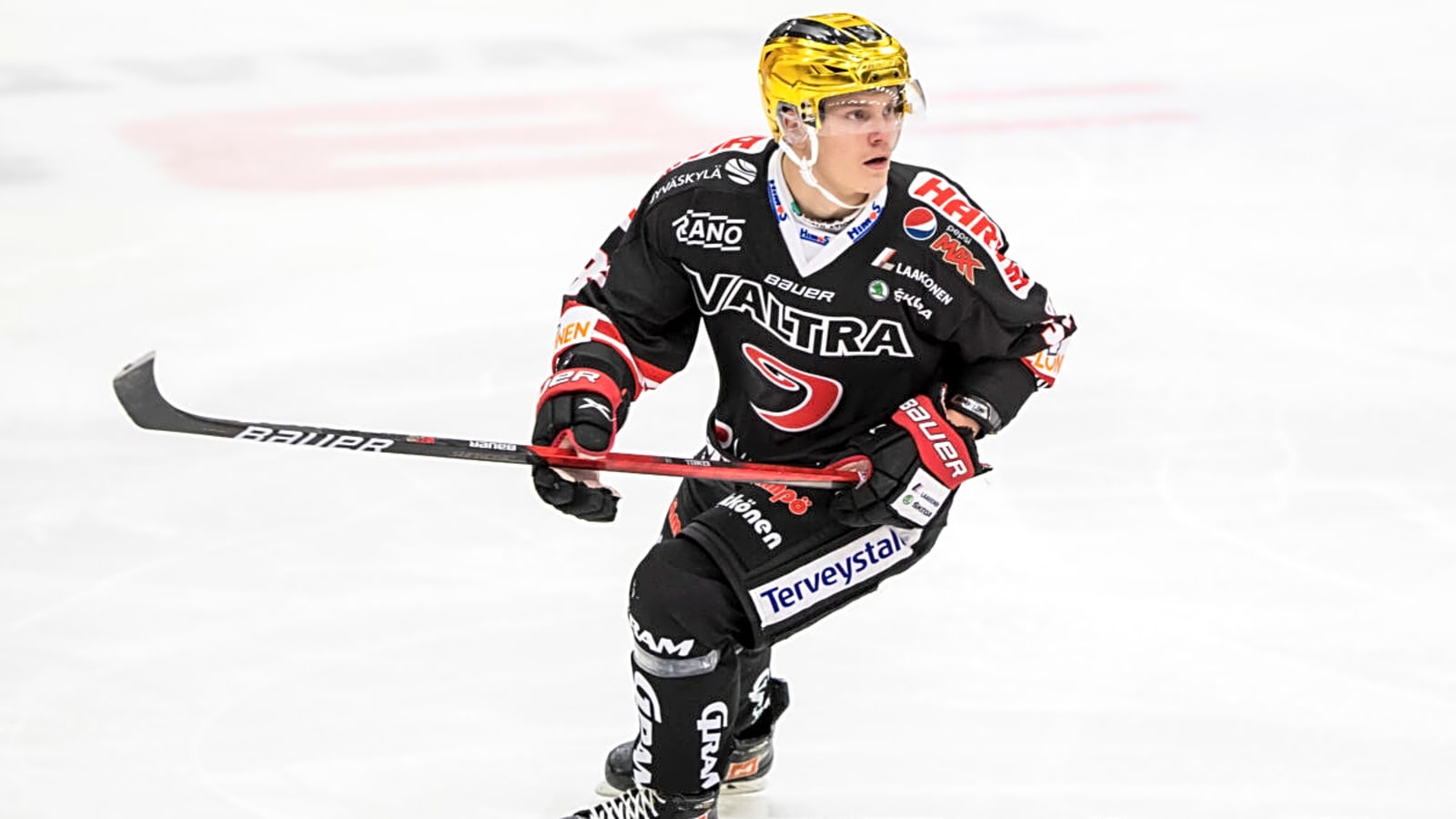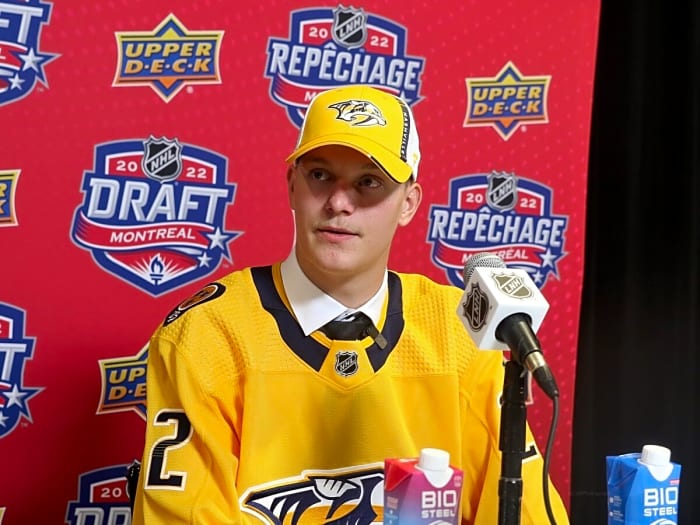
Joakim Kemell did two things every coach notices during the preseason. In overtime against the Carolina Hurricanes on Saturday, he finished a clean, heavy hit on Andrei Svechnikov, drew the extra penalty, then stepped into a one-timer for the game-winner. That thirty-second sequence took him from “Milwaukee scorer” to “opening-night option,” and the Nashville Predators’ own recap, quotes, and video angle all back it up.
Joakim Kemell lays a massive open ice hit on Andrei Svechnikov…
Kemell’s Path from Finland to North America
At 16, Kemell led JYP’s U20 team, Finland’s top junior league, in goals and points (22 and 36 in 38 games), then scored in his very first Liiga game at 17. Producing in both leagues as a teenager is a strong early sign.
In his first full Liiga season (2021–22), he put up 15 goals in 39 games and won Rookie of the Year. Liiga is a veteran league with heavy, structured defending, so a 17–18-year-old who can get to his spots and get shots off is tracking the right way.
From Jyväskylä to a Real Lane in Nashville
Last season was about proving that his offense can carry over to North American ice. In Milwaukee, Kemell produced 40 points in 65 games, with the same fast release and more comfort playing through contact. That matters for Nashville because it signals a winger who can arrive late in the play and still pose a threat without needing top-line touches.
Predators’ Training Camp
The Predators let their prospects push to final cuts, then published the opening-night sheet with Kemell among the 13 forwards. (On the same news feed, the club announced Luke Evangelista’s two-year contract.) That is real, early ice time for a right-shot finisher who fits head coach Andrew Brunette’s pace.
Nashville also claimed Tyson Jost off waivers within the last week and reassigned Zachary L’Heureux to Milwaukee. That trimmed the bottom-six battle to players who can play fast, survive the wall, and add finishing.
How Kemell’s Toolkit Fits the Predators
The Predators want width first, then an attack into the dot lane off the second touch. Kemell’s best use is as a middle-six right winger, living off a play-driver’s gravity. With a distributor like Ryan O’Reilly, he does not need the puck early; he needs to arrive on time, slide into weak-side space, and shoot in rhythm.
Kemell’s OT winner against the Hurricanes is the model: slip to the left circle and let the release do the work. On the power play, the left-flank one-timer looks ready for PP2 while Filip Forsberg, Steven Stamkos, and Jonathan Marchessault will handle the heavy first-unit workload. Nashville’s roster release and camp coverage make that clear.
Why Kemell Can Stick Beyond October
For rookies, the question is whether the tools hold when the matchups count. Kemell checks three boxes: he gets to his spots on time, he keeps his feet under contact on retrievals, and he does not need early puck touches to be dangerous.

Brunette’s note that he “deserves to be here,” the opening-night inclusion, and the late-camp roster moves will give Kemell a real chance to turn September momentum into November minutes. The rest is execution.
What to Track in Kemell’s First Ten Games
Touches that matter. Shot attempts from the dots at five-on-five and one-timers from the left flank on PP2. Use that OT shift as a reference.
Forecheck wins to chances. Recoveries that become slot passes inside five seconds. That is the Predators’ path to secondary scoring under Brunette’s tempo.
Usage anchors. If Kemell stays tied to a play-driving center and holds a PP flank once Evangelista reenters nightly usage, the team is signaling long-term trust.
Wrapping Up: What Will Actually Decide His Stay
Kemell earned his shot the right way, with repeatable plays that fit how the Predators want to score. The next step is simple to track: If he keeps arriving on time in weak-side space, turns forecheck wins into quick slot looks, and fires without hesitation on the power play unit, he will keep his jersey. If those touches dry up or he starts getting pinned on exits, the coaching staff has options, and the minutes will slide. For now, the template is clear, his role is defined, and the first ten games will be the audit.
More must-reads:
- Martin Necas' big extension with Avalanche another blow to 2026 NHL free agency
- Three NHL coaches in danger of a midseason firing
- The 'World Series single-game K leaders' quiz
Breaking News
Trending News
Customize Your Newsletter
 +
+
Get the latest news and rumors, customized to your favorite sports and teams. Emailed daily. Always free!








